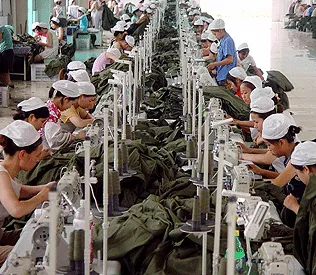
China manufacturing PMI drops to 11-month low of 50.1 in June
HSBC says inflationary pressures will start to ease this month.
And the current pace of PMI is still consistent with 13% IP growth.
Here’s more from HSBC:
| Demand is cooling thanks to the effect of tightening measures and the slackness in external markets. This, plus the ongoing inventory destocking, leads to a slowdown in output growth. But hard-landing worries are unwarranted not least because the current pace of PMI is still consistent with around 13% IP growth. Headline inflation will likely creep up further thanks to the higher food prices, although signs showing that inflationary pressures started to ease meaningfully in manufacturing sector. Beijing still needs to keep the current tightening measures to check inflationary pressures in the coming months. At 50.1, the flash reading reached a 11-month low slightly above the neutral level of 50, or 1.5pts lower than the previous PMI reading of 51.6. This notable slowdown reflects that both output and new orders growth is softening. Output sub-index fell by 1.5pts to a 11-month low at 50, thanks to the continuously easing new business flows at 50.3 in June from 52.6 in May. While domestic tightening measures filtering through to cool down demand, external slackness seems to be a more significant drag as the new exports orders subindex fell to 46.9 in June from 49.7 in May. This is the lowest level of new exports orders in the post-crisis era, underscoring the filtering through of supply disruption after Japan's earthquake and the recent slowdown in the developed markets. It is not a surprise to see output growth slowed with the ongoing destocking of finished goods inventory of 46.6 in June vs. 48.6 in May and slowing new business flows. This also leads to a marginal decline in employment with the subindex turning into a marginal decline at 49.7 in June vs. 51.3, but this single month marginal change is not sufficient to herald a trend of deterioration in labour market, in particular considering the temporary impact of inventory adjustment and the past-quake disruptions on output growth. The good news is that inflation pressures are easing meaningfully in manufacturing sector. Having been slowing over the past five months, input prices subindex reached the lowest level in 11 months at 52.1 vs. 60.1 in May, or below the long term average level at 60.3 for the first time since last September. The pass-through to output prices seems to be contained thanks to the slowing demand. The output prices subindex decelerated to 51.3 in June from 54.3 in May, the first reading below the long term average at 53.4 since last Augus |









![Cross Domain [Manu + SBR + ABF + ABR + FMCG + HBR + ]](https://cmg-qa.s3.ap-southeast-1.amazonaws.com/s3fs-public/styles/exclusive_featured_article/public/2025-01/earth-3537401_1920_4.jpg.webp?itok=WaRpTJwE)







 Advertise
Advertise
